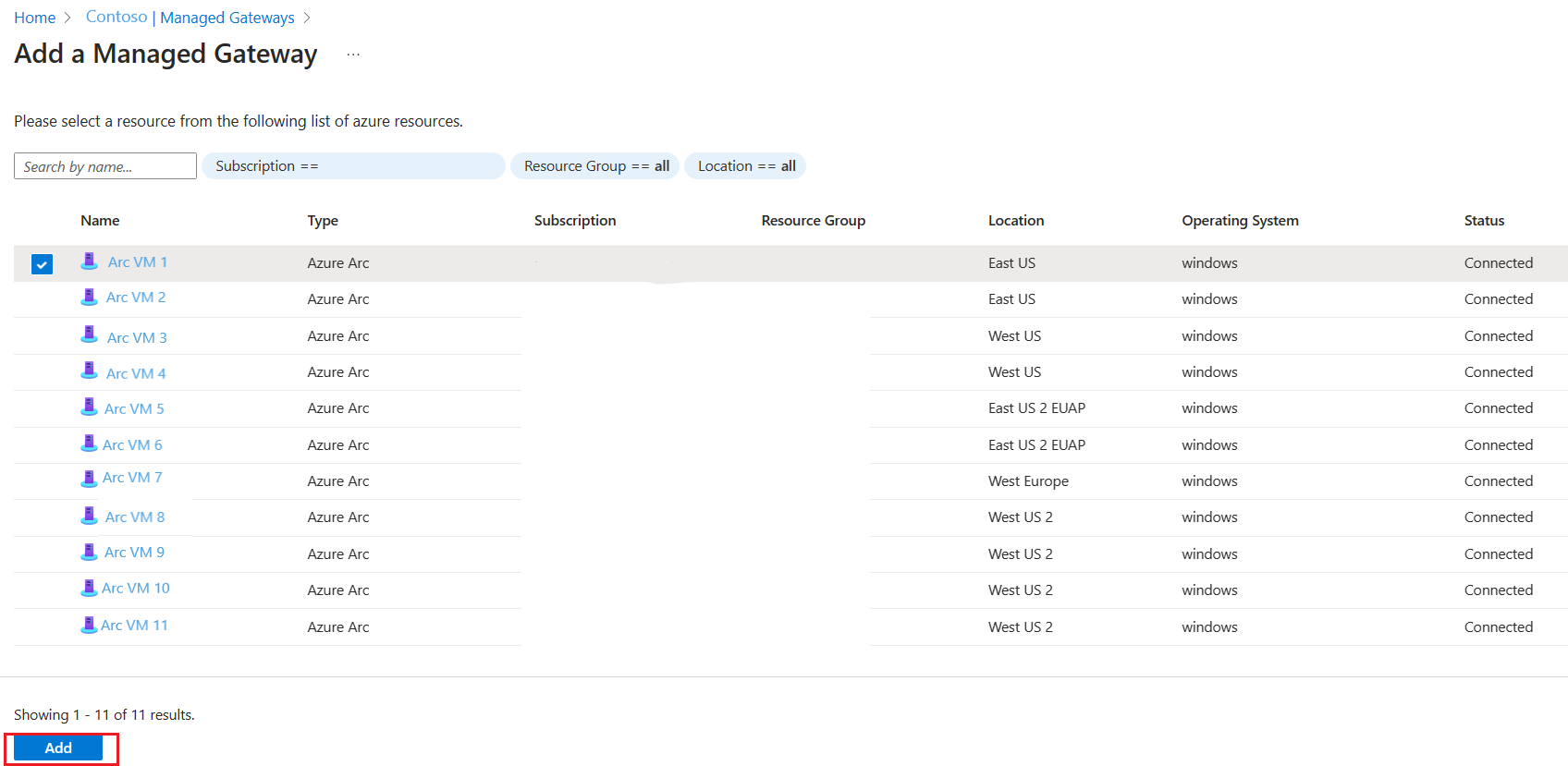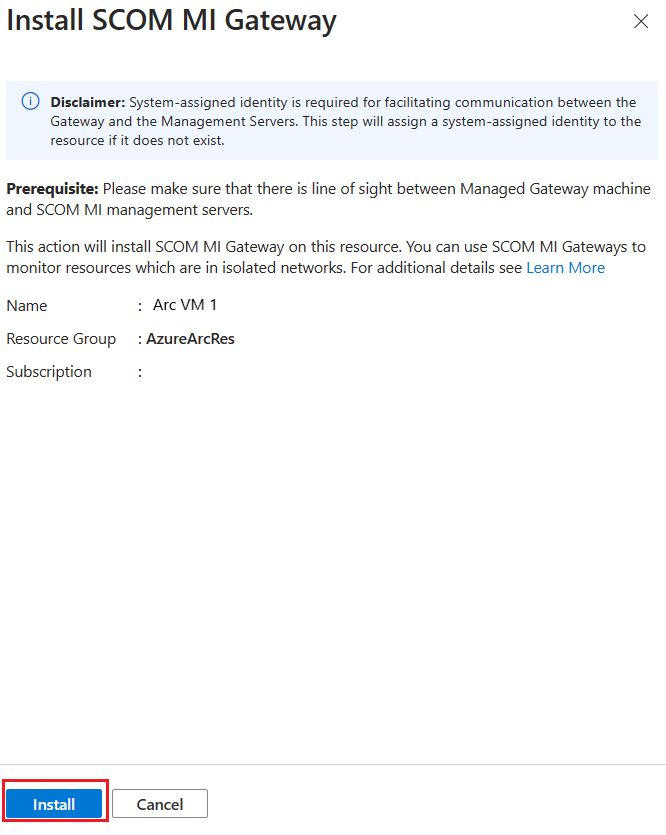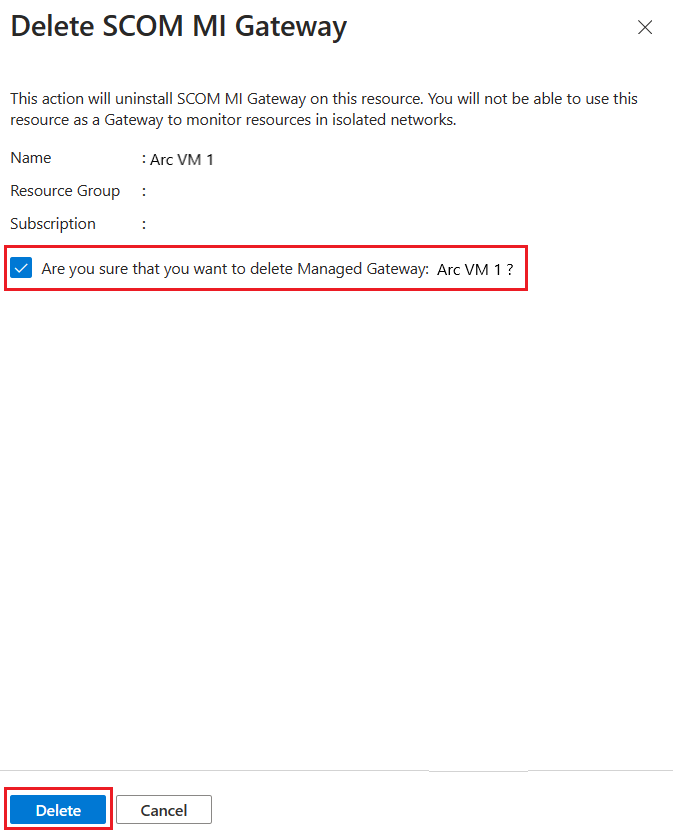Note
Access to this page requires authorization. You can try signing in or changing directories.
Access to this page requires authorization. You can try changing directories.
Note
Azure Monitor SCOM Managed Instance is no longer in support and is planned to be deprecated by 30 September 2026. This content will no longer be updated. We recommend Azure Monitor or System Center Operations Manager as an alternative solution, based on your requirements.
Azure Monitor SCOM Managed Instance provides a cloud-based alternative for Operations Manager users providing monitoring continuity for cloud and on-premises environments across the cloud adoption journey.
SCOM Managed Instance Agent
In Azure Monitor SCOM Managed Instance, an agent is a service that is installed on a computer that looks for configuration data and proactively collects information for analysis and reporting, measures the health state of monitored objects like an SQL database or logical disk, and executes tasks on demand by an operator or in response to a condition. It allows SCOM Managed Instance to monitor Windows operating systems and the components installed on them, such as a website or an Active Directory domain controller.
Support for Azure and Off-Azure workloads
One of the most important monitoring scenarios is that of on-premises (off-Azure) workloads that unlock SCOM Managed Instance as a true Hybrid monitoring solution.
The following are the supported monitoring scenarios:
| Type of endpoint | Trust | Experience |
|---|---|---|
| Line of sight on-premises agent | Trusted | OpsConsole |
| Line of sight on-premises agent | Untrusted | Managed Gateway and OpsConsole |
| No Line of sight on-premises agent | Trusted/Untrusted | Managed Gateway and OpsConsole |
SCOM Managed Instance users will be able to:
- Set up and manage Gateways on Arc-enabled servers from SCOM Managed Instance portal.
- Set high availability at Gateway plane for agent failover as described in Designing for High Availability and Disaster Recovery.
Supported scenarios
The following are the supported monitoring scenarios:
- On-premises virtual machines with no Line of sight connectivity (must use managed Gateway) to Azure
- On-premises virtual machines that have Line of sight connectivity to Azure
Prerequisites
Following are the prerequisites required on desired monitoring endpoints:
Confirm the Line of sight between SCOM Managed Instance and desired monitoring endpoints by running the following command. Obtain LB DNS (Load balancer DNS) information by navigating to SCOM Managed Instance > Overview > Properties > Load balancer > DNS Name.
Test-NetConnection -ComputerName <Load balancer DNS> -Port 5723Ensure to install .NET Framework 4.7.2 or higher on desired monitoring endpoints.
Ensure TLS 1.2 or higher is enabled.
To Troubleshooting connectivity problems, see Troubleshoot issues with Azure Monitor SCOM Managed Instance.
Install SCOM Managed Instance Gateway
Managed Gateway can be installed on Arc-enabled servers enabling it to relay monitoring data from air-gapped and network isolated servers to SCOM Managed Instance.
To install SCOM Managed Instance gateway, follow these steps:
Sign in to the Azure portal. Search and select SCOM Managed Instance.
On the Overview page, under Manage, select SCOM managed instances.
On the SCOM managed instances page, select the desired SCOM managed instance.
On the desired SCOM managed instance Overview page, under Manage, select Managed Gateway.
On the Managed Gateways page, select New Managed Gateway.
Add a Managed Gateway page opens listing all the Azure arc virtual machines.
Note
SCOM Managed Instance Managed Gateway can be configured on Arc-enabled machines only.
Select the desired virtual machine and then select Add.
On the Add Monitored Resources window, review the selections and select Add.
Delete a Gateway
To delete a Gateway, follow these steps:
Sign in to the Azure portal. Search and select SCOM Managed Instance.
On the Overview page, under Manage, select SCOM managed instances.
On the SCOM managed instances page, select the desired SCOM managed instance.
On the desired SCOM managed instance Overview page, under Manage, select Managed Gateways.
On the Managed Gateways page, select Ellipsis button (…), which is next to your desired gateway, and select Delete.
On the Delete SCOM MI Gateway page, check Are you sure that you want to delete Managed Gateway? and then select Delete.
Managed Gateway configuration
Configure monitoring of servers via SCOM Managed Instance Gateway
To configure monitoring of air-gapped and network isolated servers through Managed Gateway, follow the steps mentioned in Install an agent on a computer running Windows by using the Discovery Wizard section. Download and install agent from here.
Note
Operations Manager Console is required for this action. For more information, see Connect the Azure Monitor SCOM Managed Instance to Ops console.
Install agent for Windows virtual machine
To install agent for Windows virtual machine, download and follow these steps.
Before you use either method to manually deploy the agent, ensure the following conditions are met:
The account that is used to run MSI must have administrative privileges on the computer on which you're installing agent.
Each agent that is installed with the Setup Wizard or from the command line must be approved by a management group. For more information, see Process Manual Agent Installations.
SCOM Managed Instance must be configured to accept agents installed with MSI, or they'll be automatically rejected and therefore not display in the Operations console. For more information, see Process Manual Agent Installations. If the managed instance is configured to accept manually installed agents after the agents have been manually installed, the agents will display in the console after approximately one hour.
Follow these steps to deploy the SCOM Managed Instance agent with the Agent Setup Wizard:
Use local administrator privileges to sign in to the computer where you want to install the agent.
On the Operations Manager installation media, double-click Setup.exe.
In Optional Installations, select Local agent.
On the Welcome page, select Next.
On the Important Notice page, review the Microsoft software license terms and select I Agree.
On the Destination Folder page, leave the installation folder set to the default, or select Change and type a path, and select Next.
On the Agent Setup Options page, you can choose whether you want to connect the agent to Operations Manager.
On the Management Group Configuration page, do the following:
a. Enter the name of the SCOM Managed Instance name in the Management Group Name field and the Load Balancer DNS name in the Management Server field.
Note
To use a gateway server, enter the gateway server name in the Management Server text box.
b. Enter a value for Management Server Port, or leave the default of 5723.
c. Enter Next.
On the Agent Action Account page, leave it set to the default of Local System, or select Domain or Local Computer Account; enter the User Account, Password, and Domain or local computer; and select Next.
On the Ready to Install page, review the settings and select Install to display the Installing Microsoft Monitoring Agent page.
When the Completing the Microsoft Monitoring Agent Setup Wizard page appears, select Finish.
Configure monitoring of on-premises servers
To configure monitoring of on-premises servers that have direct connectivity (VPN/ER) with Azure, follow the steps mentioned in Install an agent on a computer running Windows by using the Discovery Wizard section.
Note
Operations Manager Console is required for this action. For more information, see Connect the Azure Monitor SCOM Managed Instance to Ops console.





